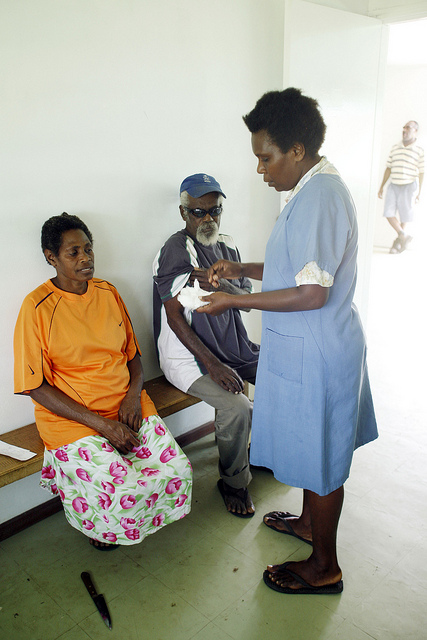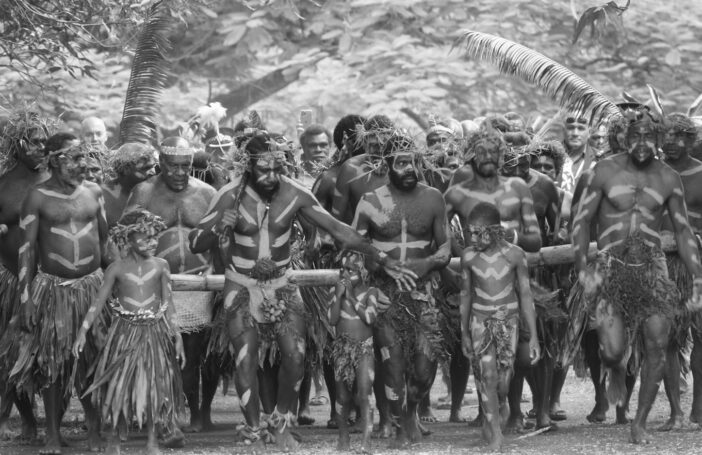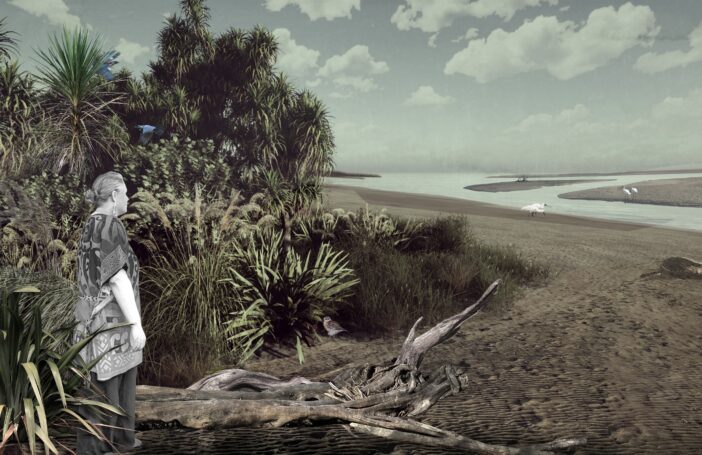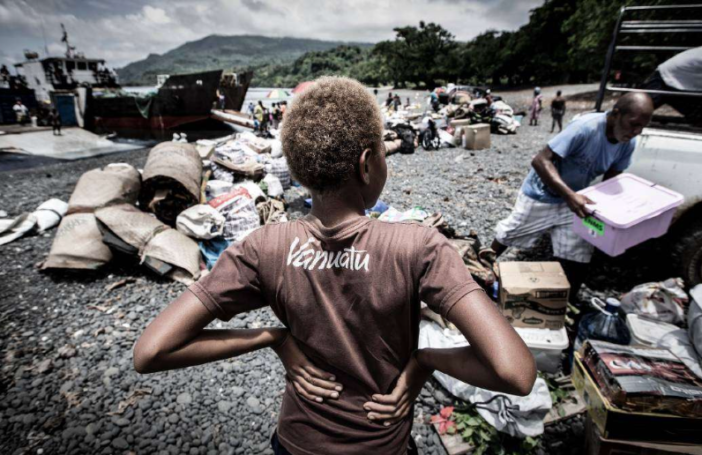Knowledge and belief systems combining Christian and indigenous spiritual contexts are often central to causal explanations for illness and death in Vanuatu. As throughout the Pacific region, these are linked to a heavy reliance on what are typically described in public health and related development literature as “traditional healers.” Even so, very little systematic research has been done on the diversity of healing approaches and practices that fall under this broad term, or how and why people seek out and use such services in addressing problems of health and wellbeing (see e.g., Tynan et al 2011, Viney et al 2014a, 2014b). This post reports several key findings from a survey conducted in Luganville, Vanuatu, undertaken as a part of an Australian Research Council Discovery Project (DP140104244) examining the relationship between spiritual beliefs, medical pluralism and health seeking behaviour. Concentrating on the increasing prevalence of type 2 diabetes [1], and including the role of herbal, spiritual and other complementary and alternative medicines and healing techniques (CAM), this study examined how local understandings of disease aetiology and perceptions of healing efficacy impact upon the decisions individuals make in seeking treatment.
Luganville, the capital of Sanma Province, was chosen for its relatively large and heterogeneous population of approximately 14,000 people at the time the survey was carried out. Taking into account population diversity, including island of origin and related socio-economic factors, seven primary survey sites were targeted. A survey tool was developed in collaboration with indigenous health professionals, community leaders and enumerators over four days of workshops and trials. The survey included sections on basic demography, attitudes and use of formal (state-administered) and informal (CAM) healthcare providers, and knowledge regarding illness and disease aetiology, including the role of sorcery in ill health and healthcare seeking behaviour. The process of survey development included extrapolating the vague, locally inappropriate and often monolithically applied term ‘traditional healer’ into categories more commonly employed in the national lingua franca, Bislama, namely: man blo prayer (loosely, Christian faith healer), man blo lif (loosely, herbalist), kleva (loosely, diviner), as well as massage, bone setter, and self-administered treatments.
In total, eight enumerators completed 313 surveys in Bislama between July 1 and 8, 2015. Results obtained indicated that 255 respondents (81.5%) had sought the assistance of CAM healthcare sources in the 12 months prior to the survey being carried out. By comparison, 205 (65.5%) of the same cohort had utilised the formal health system.
The results showed that cost of services may not comprise a primary disincentive to formal healthcare utilisation, as is often assumed by members of the public and healthcare workers alike. While formal health services were cited as most likely to require payment, respondents consistently reported spending considerably more money on CAM providers. The average cost of seeking treatment through formal services was 435 vatu per consultation (roughly AU$5). By comparison, those seeking treatment through a herbalist were charged the most, paying 1,909vt per consultation (AU$22.50), while use of diviners and the purchasing of leaves and herbs for self-medicated remedies cost on average 1,429vt (AU$17) and 1,318vt (AU$16) respectively. Given that Luganville is home to the nation’s second largest referral hospital—which for most residents is within an AU$1 bus ride, if not walking distance—these figures indicate that a more complex set of factors contribute to health service choices than cost and proximity.
Related to this issue, clear distinctions were made in terms of relative levels of satisfaction regarding healthcare provision by category. Although all providers ranked considerably high in terms of satisfaction and perceived efficacy, services provided by faith healers were held in highest regard, with 96.3% of respondents who’d engaged in this service indicating positive association. While charging an average of 600vt (AU$7) per consultation, faith healers were the second cheapest provider, being slightly more expensive than formal services. Conversely, responses indicated that services provided by herbalists were not only the most expensive, but also considered the least effective of all providers with positive association noted by just 85.4% of respondents. Perceived efficacy aside, such findings are consistent with widely held moral and spiritual conviction that money, and in particular through healers who are seen to charge too much, can interfere negatively with the healing process.
A case study focusing on perceptions of diabetes was included to provide greater understanding of how and why people make decisions regarding healthcare options. Perceptions regarding diabetes indicate significant community awareness of rising non-communicable disease (NCD) trends, with 228 respondents (73.3%) considering the disease to be of significant concern. Participants identified 23 potential causes of diabetes; the most common responses included the consumption of store purchased foods (49%), eating too many sweet foods (37%), inadequate exercise (31.2%), lack of dietary balance (26.3%), drinking too much sugar (18.2%), and genetic causes (15.9%). Reflecting rigorous NCD health promotion over the last number of years, these responses indicate a moderate community-level understanding of diabetes determinants.[2]
Less positively, the widespread identification of suka (“sugar”) as a cause of diabetes is reflective of Bislama terminology for that condition, sik suka (literally, “sick sugar” or “sugar sickness”). Our findings strongly suggest that this lexicon contributes inadvertently to the identification of sugar as the sole determinant of diabetes onset, creating a false sense of risk reduction amongst community members who may continue to engage in other lifestyle-related behaviours that are risk factors for diabetes.
In addition, 23 respondents (7.5%) cited kastom (loosely, traditional knowledge and practice, but in health-related discourse more often referring to sorcery) and a further seven (2.3%) posen (“poison”, a common sorcery-related technique), as a primary cause of diabetes. While these figures were somewhat lower than expected, when asked directly 196 respondents (62.6%) considered sorcery (in Bislama, blak masik or “black magic”) a plausible cause of diabetes onset.
Answering further questions regarding instances where illness was considered to have resulted specifically from sorcery, just over half of respondents (53%) considered CAM sources to be the most beneficial in providing an initial diagnosis, above formal services. Likewise, 54.2% identified CAMs to be the most effective in the subsequent treatment of sorcery-induced illnesses. Results also indicated significant trust in the efficacy of faith healers (58%) in treating sorcery-induced illnesses. By comparison, just 48.8% considered formal services to be effective in treating sorcery-related ailments. As these findings indicate, despite considerable confidence in the effectiveness of the formal health system, individuals are more likely to source alternative treatments, including especially in the form of Christian prayer, in instances where an illness is believed to have resulted from sorcery (for Papua New Guinea, compare Cox and Phillips 2015, in Forsyth and Eves (eds) 2015).
The rapidly changing cultural and socio-economic contexts of urban Vanuatu foster diverse health seeking practices. Framed by locally specific knowledge and beliefs regarding illness causation and healing efficacy, this corresponds to a highly pluralist healthcare setting in which formal contexts of provision operate alongside diverse complementary and alternative forms. Indeed, as shown in the diabetes case study, this research suggests a complex context in which indigenous and Christian-related understandings and practices relating to health and illness causation are merged with biomedical knowledge. Held in similarly high regard, these intersecting contexts are often utilised sequentially and/or in conjunction with one another. It is essential that healthcare practitioners, public health educators and researchers take better account of this dynamic integration of formal and informal treatment options, and diverse knowledge around illness causation and healing, including as related to sorcery and the integration of indigenous and exogenous knowledge. In relation to NCDs such as diabetes, such contexts affect timely patient presentation to formal service providers, adherence to biomedical treatment regimes, and healthy lifestyles. It also underlines the need, currently largely unmet across the Pacific region, to engage more meaningfully with both healthcare consumers and a wide spectrum of informal healthcare providers in seeking to bring about positive public health outcomes (Ibell 2015, Viney et al 2014b).
John Taylor is Senior Lecturer (Anthropology) at La Trobe University. Lana Elliott was, at the time of research, Health Promotion Adviser with the Vanuatu Ministry of Health.
Notes:
[1] Albeit noting erroneously inflated WHO STEPS data relating to this condition (Zimmet and Taylor 2016)
[2] Vanuatu Ministry of Health, 2016. Vanuatu Non Communicable Disease Policy and Strategic Plan 2016-2020, Government of the Republic of Vanuatu, Vanuatu Ministry of Health, Port Vila.





